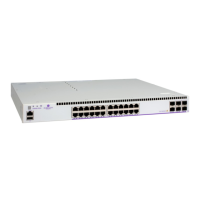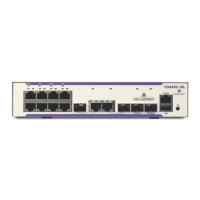Services
7210 SAS M Services Guide Page 73
Ethernet Connectivity Fault Management (ETH-CFM)
Ethernet Connectivity Fault Management (ETH-CFM) is defined in two similar standards: IEEE
802.1ag and ITU-T Y.1731. They both specify protocols, procedures, and managed objects to
support transport fault management, including discovery and verification of the path, detection
and isolation of a connectivity fault for each Ethernet service instance. CFM functionalities are
supported on 7210 SAS platforms.
The configuration is split into multiple areas. There is the base ETH-CFM configuration which
defines the different Management constructs and administrative elements. This is performed in the
ETH-CFM context. The individual management points are configure within the specific service
contexts in which they are applied.
The 7210 SAS Services Guide provides the basic service applicable material to build the service
specific management points, MEPs and MIPs.
The different service types support a subset of the features from the complete ETH-CFM suite.
ETH-CC used for continuity is available to all MEPs configured within a service. 7210 SAS-M
support Down MEPs and UP MEPs, though the support is not available on all platforms. For more
information, see the table below.
NOTE: UP MEPs cannot be created by default on system bootup. The user needs to explicitly
allocate hardware resources for use with UP MEP feature, using the commands that appear under
configure> system> resource-profile CLI context. Only after resources have been allocated by the
user, UP MEPs are allowed to be created. Until resources are not allocated to UP MEP, the
software fails all attempts to create an UP MEP.
The troubleshooting tools ETH-LBM/LBR, LTM/LTR ETH-TST defined by the IEEE 802.1ag
specification and the ITU-T Y.1731 recommendation are applicable to all MEPs (MIPs where
appropriate).
The advanced notification function AIS defined by the ITU-T Y.1731 is supported on Epipe
services.
The advanced performance functions, 1DM, DMM/DMR and SLM/SLR are supported on all
service MEPs.
For a description of the individual features and functions that are supported refer to the applicable
OAM Diagnostics Guide.
